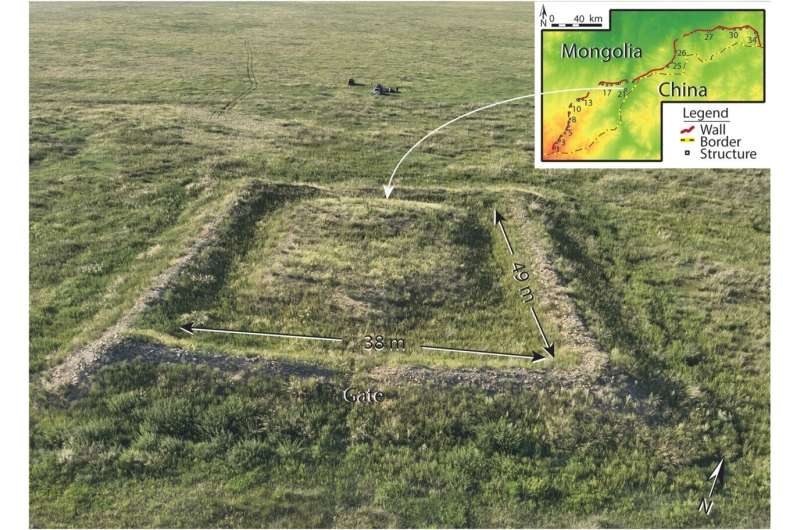December 29, 2023 report
This article has been reviewed according to Science X's editorial process and policies. Editors have highlighted the following attributes while ensuring the content's credibility:
fact-checked
peer-reviewed publication
trusted source
proofread
Study of Mongolian Arc adds to mystery surrounding its purpose

A team of archaeologists at the Hebrew University of Jerusalem in Israel, working with a colleague from the National University of Mongolia, has conducted a study of the 405-km wall system in eastern Mongolia known as the Mongolian Arc in order to learn more about its history and purpose. In their paper published in Journal of Field Archaeology, the group describes the techniques and technology they used to study the wall.
There is a section of the Great Wall of China that extends into Mongolia (which is an independent country) that has come to be known as the Mongolian Arc due to its shape. As is noted by the research team, compared to the wall in China, the Arc in Mongolia has received little study. In this new effort, they sought to learn more about the wall using a variety of approaches.
One approach involved mapping the wall, which stretches from the Dornod Province to the Sukhbaatar Province, roughly along the border between Mongolia and China. Prior research has shown that it comprises 34 structures and was constructed using both earthen walls and trenches.
They also found that historical records detailing when the wall was built are unclear, putting its construction somewhere between the 11th and 13th centuries. The team also looked at weather records to learn more about what the wall has endured over the years and satellite imagery to learn more about associations between wall locations and terrain. They also conducted field studies to learn more about the composition and condition of the wall.
The research team found some surprises. The biggest was that the wall had large gaps that suggest it was not built to keep out all invaders—it appears it was built quickly in response to certain aggressors. There is also evidence that suggests the wall was built as a means of controlling the movement of people or animals or perhaps as a part of a taxation scheme.
Such theories arose as it became clear that the wall would not have served as much of a barrier—many of its outposts, for example, were in places that offered limited views into the surrounding territory.
The researchers acknowledge that they were not able to provide any definitive answers regarding the reason for the construction of the wall or to provide a more accurate time of construction. They plan to continue their work, hoping to learn more.
More information: Ying Tung Fung et al, Unraveling the Mongolian Arc: a Field Survey and Spatial Investigation of a Previously Unexplored Wall System in Eastern Mongolia, Journal of Field Archaeology (2023). DOI: 10.1080/00934690.2023.2295198
Journal information: Journal of Field Archaeology
© 2023 Science X Network


















